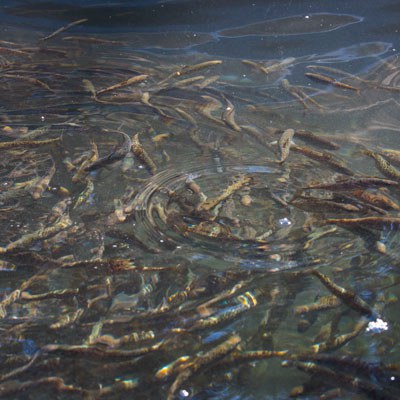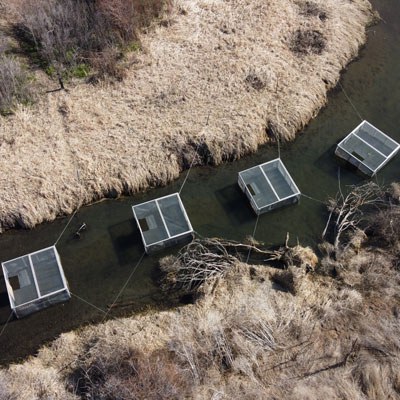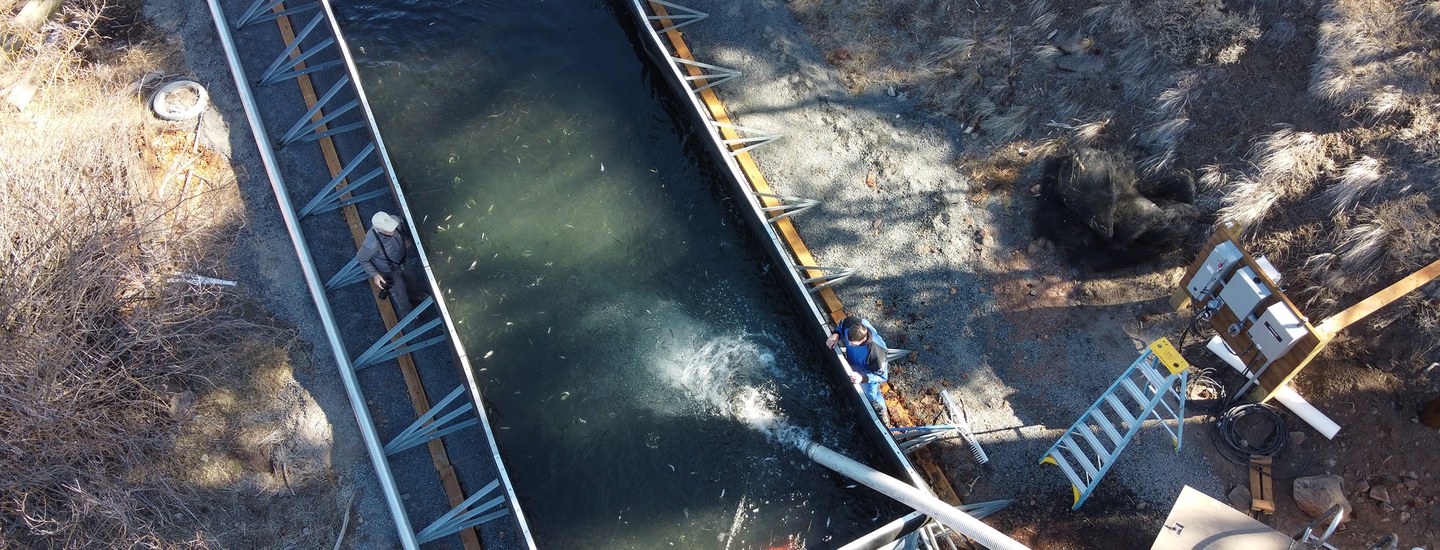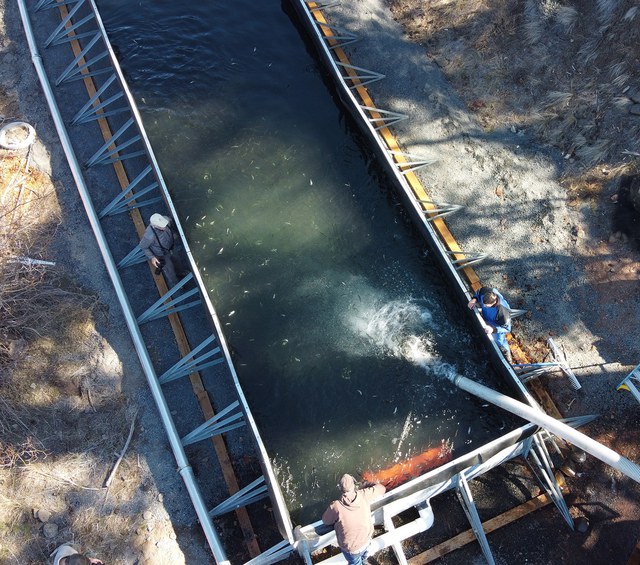The Deschutes Land Trust has been a long-term partner in the reintroduction of salmon and steelhead to the upper Deschutes River region. Over the years, our reintroduction partners have experimented with a variety of adjustments to their program. This includes a move this year to exclusively release fish that are one year old, called smolts. 
Acclimation is when smolts are placed in a holding facility that contains water from the stream the fish would naturally return to for spawning. At Camp Polk Meadow Preserve, this means there is water from Whychus Creek in the acclimation tank. Smolts are particularly sensitive to the smell of the water from their home creek and use this time in their lives to store the smell in their brain. Then, they use this clue to help find their way back to Whychus Creek to spawn as an adult. Learn more about imprinting.
The fish are kept in the acclimation tanks for around three weeks. After that, a screen is removed so that the fish can swim out of the tank and into the creek on their own. After several days, the fish remaining in the tank are placed in the creek.
Why are we using these new acclimation tanks instead of what we've done in the past--releasing tiny little fish called fry? Some research has shown greater survival rates for smolts. In addition, there are studies that show this method makes returning adults less likely to swim upstream and spawn in a different creek.
Ochoco Preserve has a slightly different set-up, using what are called "live cars." These are large, temporary screened boxes that are put directly into Ochoco Creek. Four live cars are at Ochoco Preserve and serve the same function as an acclimation tank. Around 20,000 Chinook have been acclimated and released at the Preserve already. Steelhead are currently being acclimated with another batch of steelhead on their way.
We are hopeful this new method will help bring more salmon and steelhead back to Whychus Creek and the Ochoco Preserve area to spawn in the future!
Learn more:
- Salmon and Steelhead Reintroduction Update 2019
- Sockeye and Kokanee in Central Oregon
- Searching for Chinook


